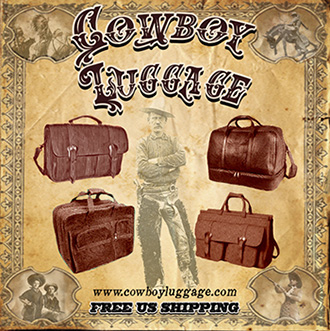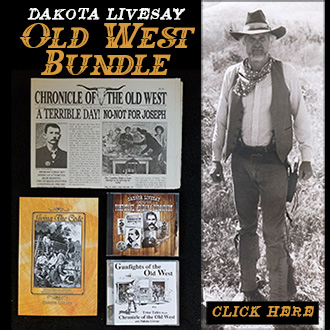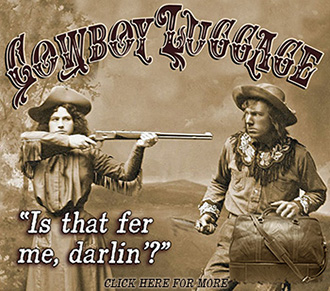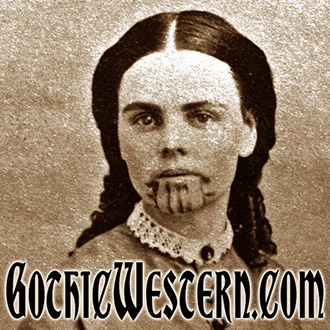 Butch Cassidy My Uncle, Bill Betenson, High Plains Press (1-800-552-7819), $1995, Paperback. 300 pages, Photographs, Notes, Bibliography, Index.
Butch Cassidy My Uncle, Bill Betenson, High Plains Press (1-800-552-7819), $1995, Paperback. 300 pages, Photographs, Notes, Bibliography, Index.
Back in the 1960s, most of us who love western movies went to see a flick called Butch Cassidy and the Sundance Kid. Paul Newman and Robert Redford played the important roles, and we came away impressed and intrigued having seen a cowboy movie we were told was based on facts.
Butch and Sundance were real, and most of their exploits have been delved into now that Hollywood brought the pair to light. So much has been written and told about Butch Cassidy, that one family member Bill Betenson, the great-grandson of Butch’s youngest sister, decided to try to set the record straight. Butch Cassidy came from a large and mostly law-abiding family. Except for one uncle, Dan Parker, who spent time in the Detroit House of Corrections for holding up a store, the rest of the Parkers were embarrassed by Butch’s outlawry.
This book begins with the early life of Butch, whose real name was Robert LeRoy Parker, telling of his youth, schooling and employment. Betenson has access to family memorabilia, plus he has done an admirable job of searching through historical documents, newspaper articles, and public records as well as visiting many of the places where Butch lived.
Butch (a nickname he acquired after working as a butcher), seemed easily attracted to life on the wild side. He did have real jobs in ranching and mining, and his employers always spoke highly of his good manners and careful attention to his duties. But he was also intrigued with adventure and easy money. At various times he took up with characters of questionable integrity, and was therefore involved in a variety of robberies. He rode with a gang holed up in the wilds of Utah. Robbing banks, stagecoaches, trains and even horse rustling were the usual endeavors. Butch spent most of his adult life hunted by sheriff’s posses, cavalry units and detectives working for Pinkertons
This book is filled with family photos and various scenes from Butch’s past, including images of his friends and relatives, besides members of the gang when he hooked up with Harry Longabaugh, (the Sundance Kid). Butch traveled with Sundance and a variety of other gang members, even going as far away as New York City, joined by an attractive young woman known as Ella Place. Butch, Sundance and Ella finally drifted to South America where authorities in the United States continued to hunt them. They wound up in Argentina, and even bought a cattle ranch where they planned to start anew. But alas the Pinkertons and other law enforcement people seemed always lurking nearby.
Again the trio got involved in bank robberies, and conflicting reports has them either killed in South America, or having gotten away due to some other American outlaws killed by police, being mistakenly identified as Sundance and Butch. This of course led to all the modern day controversy. Did Butch die in South America? Did he really come home years later as some of his friends and relatives insist? It has long been told, even in the movie, that Butch and Sundance died in a hail of lead in South America after they robbed a bank. However, there is a strong case told here that while Sundance may have died there, Butch survived and returned years later to the United States.
The last chapter of the book delves into all of the available information the author has gleaned pointing to Butch’s return. The author writes an intriguing account in a forthright manner without trying to sway the reader’s opinion one way or the other. This book is a treasure of factual information about the life and times of Butch Cassidy, and most likely the best written so far. It’s another good one from High Plains Press.
Editor’s Note: The Reviewer, Phyllis Morreale-de la Garza is the author of many published books, including the novel Nine Days at Dragoon Springs, published by Silk Label Books, P. 0. Box 700, Unionville, New York 10988 (845-726-3434) www.silklabelbooks.com.
*Courtesy of Chronicle of the Old West newspaper, for more click HERE.
 It was the end of June of 1876. Crazy Horse, along with Sitting Bull, had just completed the greatest victory of the Indians over the U. S. military with the defeat of George Custer at Little Big Horn. The American people demanded revenge. These were the events that lead to Crazy Horse’s Final Battle.
It was the end of June of 1876. Crazy Horse, along with Sitting Bull, had just completed the greatest victory of the Indians over the U. S. military with the defeat of George Custer at Little Big Horn. The American people demanded revenge. These were the events that lead to Crazy Horse’s Final Battle. It was the end of June of 1876. Crazy Horse, along with Sitting Bull, had just completed the greatest victory of the Indians over the U. S. military with the defeat of George Custer at Little Big Horn. The American people demanded revenge. These were the events that lead to Crazy Horse’s Final Battle.
It was the end of June of 1876. Crazy Horse, along with Sitting Bull, had just completed the greatest victory of the Indians over the U. S. military with the defeat of George Custer at Little Big Horn. The American people demanded revenge. These were the events that lead to Crazy Horse’s Final Battle.
 Apple Water:
Apple Water: Nathan E. Meeker started out as an agricultural writer for Horace Greeley’s New York Herald. He had a particular interest in cooperative farming and living. So
Nathan E. Meeker started out as an agricultural writer for Horace Greeley’s New York Herald. He had a particular interest in cooperative farming and living. So 
 Butch Cassidy My Uncle, Bill Betenson, High Plains Press (1-800-552-7819), $1995, Paperback. 300 pages, Photographs, Notes, Bibliography, Index.
Butch Cassidy My Uncle, Bill Betenson, High Plains Press (1-800-552-7819), $1995, Paperback. 300 pages, Photographs, Notes, Bibliography, Index. On December 16, 1883, five masked men attempted to rob a store in
On December 16, 1883, five masked men attempted to rob a store in 


